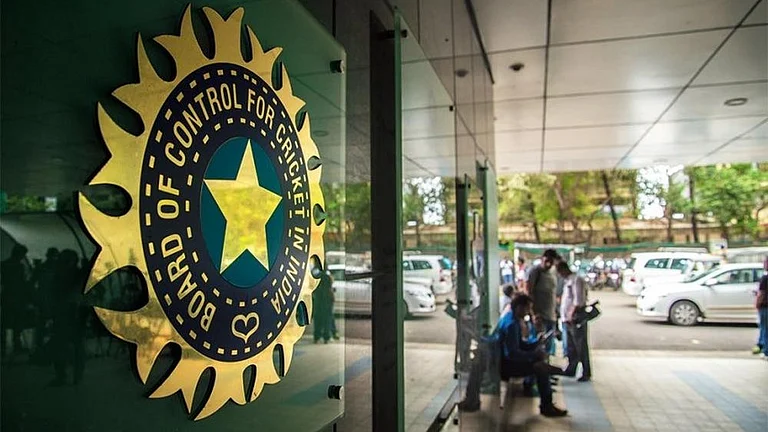Of late, I have developed hypertension. Not because of a medical disorder but because Ive been trying to surf the web in India. My private ISPs dial-up and handshake work out just fine but thereafter, I pull my hair out to download web pages. It takes 10 minutes to reach my mailbox, another 10 to download a message and perhaps an hour to see the picture my friend has sent from the US. Everyday my blood pressure rises because of this. I have given up.
The web is the magic word in India today. Net accounts come packaged on our neighbourhood store shelves like instant noodles-it takes only a little more than two minutes to unpack and plug into a new identity. And then the trouble begins.
Why are bad connections, painful dial-ups and slow access speed the order of the day in India, a country thats supposed to be at the forefront of the worlds IT revolution? Because the bandwidth available here is a pathetic 325 megabits per second (MBPs).
Bandwidth is the measure of the speed of communication operations. The bandwidth of a transmitted (or received) communications signal (analog or digital) is a measure of the range of frequencies the signal occupies. It is similar to a pipes capacity to carry water, gas or, in this case, data. The broader the pipe, the more and faster it can transmit and receive data.
Most Net-savvy nations have over 10 gigabits per second (GDPs is a thousand times faster than MBPs and terabits, in turn, a thousand times of GDPs). The US leads the show with 500 GDPs and is now mulling terabits. IT major Cisco Systems California campus alone has a bandwidth of 2.6 GDPs. Japan and the UK, on the other hand, offer 160 GDPs and 120 GDPs, respectively. Even neighbouring China, a late entrant, is galloping at 55 GDPs.
Why is the bandwidth so low in India? Lack of infrastructure, to put it mildly. India doesnt have a national Internet backbone. And the government does its bit by routinely stifling growth and dampening the process of setting up broadband access. Bandwidth is a still a VSNL monopoly. Recently, the government did allow Internet service providers to set up gateways and buy bandwidth from outside but made sure it was done only through VSNL. Says Sukaran Singh of NetMedia India, whose website Broadcastindia.com has big plans in broadband: "In India, overall demand for bandwidth is 100 times more than what is available. Even the smallest company individually requires 2-4 megabits."
Heres what one can do on broadband:
Thus, what we are losing out in the process is phenomenal. If India wants to have any say in the global infotech sector, if its planning applications or a futuristic communications system, it would be futile to go ahead at todays bandwidth level. Says Dewang Mehta, president, NASSCOM: "If bandwidth requirements are not met in time, India can potentially lose its right to compete in at least 30 per cent of its target export markets because of its inability to link with the global telecom infrastructure. India will face a significant disadvantage in providing the back end to global e-commerce systems and providing remote network management, something we are good at."
And the hard truth is we are gradually getting left out of the race. In the West, using the Internet for video and voice communications is routine. Where downloading large files takes seconds, real-time sound transfer is usual and heavy graphic-intensive packages or web pages take less than a minute to come on screen. In India, it can take an eternity. As a result, potential investors are heading for Southeast Asia where bandwidth is almost unlimited.
Also, no one wants to put up material in Indian cyberspace. Most of the information is accessed from American servers. Says Mehta: "We have just 1,300 sites with the .in suffix because no one but the government wants to host websites in India. We have millions of Indian websites registered in the US and many more get registered every month. The government is losing massive revenue on this account. Once we increase the bandwidth in India, the rush will be homebound than towards the US."
And the government is extremely myopic. Its only answer to the bandwidth drought is the completion of a three-year-old project for setting up a 34-mbps national Internet backbone which, at todays demand levels, would be less than a drop in the ocean. Another link, Sea-Me-We-3, with a higher 20 gb capacity, is running behind schedule. And demand is far exceeding supply here. According to NASSCOMs Operation Bandwidth Survey, demand in India (with less than one million Internet connections at present) is 5 GDPs. It will exceed 10 GDPs by year-end. When Internet access through the cable becomes routine... well, we dread to think what will happen.
And "bandwidth requirement will jump from 10 GDPs in 2000 to over 300 GDPs by 2005". VSNL, however, modestly estimates current demand between 750 MBPs and 1 GDPs, set to grow to just 13-20 GDPs by 2004.
Of late, the government may be thinking of ending VSNLs monopoly over bandwidth. A Bandwidth Committee was set up late last month to figure out ways and means to take a quantum jump in bandwidth availability. Among other things, the panel will consider allowing flag (Fibre-Optic Link Across the Globe) Telecom, whose submarine cables pass through India, to directly sell bandwidth to ISPs. Currently, flag has to sell its link to VSNL which buys just about 155 MBPs from its 10 gb line. Says Niraj K. Gupta, director (South Asia), for flag: "Even if Sea-Me-We-3 comes in, e-commerce cannot take off in India if bandwidth remains a monopoly."
The committee will submit its recommendations in two months. VSNL has also started "Operation Bandwidth" by acquiring global capacity for leased lines to offer bandwidth on demand. Its plan is to put in place an additional bandwidth of 510 MBPs over the next three months. It claims that from October, customers will be offered at least 2 MBPs within 60 days and up to 155 mbps within 90 days.
The private sector too is warming up. Several large corporates have stepped on the gas to wire up India. These include Spectranet from the Punj-Lloyd stable, Reliance Industries, BPL, the Hinduja Group, WorldTel, Bharti Enterprises, Hathway and MTNL, among others. Spectranets Delhi-Gurgaon backbone, BPLs backbone connecting Bangalore, Chennai and Pune and Worldtels optical-fibre network in Tamil Nadu are already in place. But of course, the best thing will be to open up the field. Will that eventually happen? Net users can keep their fingers crossed.
BOTTOM OF THE CHARTS (1999-2000)
India 325 mbps
China 55 gbps
Japan 160 gbps
USA 500 gbps
1 gbps = 1,024 mbps
mbps: megabits per second






















